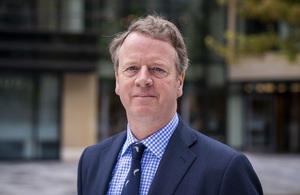Poole Harbour is designated as a Special Protection Area (SPA), Site of Special Scientific Interest (SSSI) and Ramsar site. But an increase in nutrients entering the harbour waters over the last 50 years has led to a deterioration in water quality and affected wildlife.
The amount of nitrogen entering the harbour has more than doubled, from around 1,000 tonnes/year in the 1960s to around 2,300 tonnes/year now. As a result, the harbour’s mudflats have become covered in green algae, which has smothered sea grass and saltmarsh, impacting on wetland birds and other ecosystems and wildlife.
Now local farmers in the Poole Harbour catchment are aiming to become some of the most nitrogen efficient in the UK. They are taking on the responsibility of reducing their nitrogen losses from their soils to a point that will not harm the environment and are developing a nutrient management scheme to meet their ambition.
This new approach follows the publication of the Environment Agency and Natural England’s Poole Harbour Consent Order Technical Recommendations (PHCOTR), which sets new interim nitrogen and phosphorus targets for the catchment. PHCOTR states that nitrogen loads which reach the harbour should be reduced from around 2,300 to 1,500 tonnes/year, and ortho-phosphate (OP) loads should be reduced from around 51 to 22 tonnes/year.
It is not just farmers we are working with to ensure targets are met. Wessex Water, local authorities, local industries and the general public all play a role in reducing nutrients entering the harbour.
However, it is agriculture that contributes the largest source of nitrogen to the catchment, and a significant amount of phosphorus.
We have set new emission limits and measures that farmers should follow to ensure their activities do not cause harm to the water environment. Farmers now need to start to plan and implement the measures to achieve these objectives, and from 2023 farmers need to ensure their nutrient losses across their farm holding (or group of farm holdings) do not exceed 18.1 kilogram/hectare/year nitrogen.
Or where the farmer joins an Environment Agency approved scheme*1 they need to meet alternative glide path targets which will achieve the emission target by 2030. In such a scheme, all farmers are incentivised to maximise efficiency (and no farmer can apply above crop need), but farmers that have reduced their losses below the glide path can trade nitrogen credits to farmers looking to offset some of their nutrient losses. These timescales align with water company improvements delivered through their capital investment programme.
We are providing new tools, including the Nitrate Leaching tool (NLT) and Agricultural Compliance Tool (ACT), which farmers can use to calculate the amount of nutrients they are losing to the environment and to ensure they are compliant with existing regulations. Farmers will need to use these tools (or other agreed tools) each year to ensure their nutrient plan and farm practices meet these new emission limits and requirements.
Starting this year, farmers must report to us, or the independent body overseeing any approved scheme, on their compliance and nutrient loss. Those farmers not returning information are likely to be prioritised for inspection by our newly-appointed Agricultural Officers.
Wessex Area is applying the same principles across their highest risk groundwater safeguard zones at risk from high and rising nitrogen concentrations.
Giles Bryan, Senior Technical Specialist in Wessex Area, said:
We have been working very closely with Natural England to set these water quality targets, and with the farming community and water company to agree how they will meet these new water quality objectives.
By working together we will enable sustainable food production, water supplies and waste water treatment, whilst protecting the environment and securing the future of this fantastic place for wildlife and people.
This plan will ensure all sectors that have contributed to rising nutrient concentrations in the catchment will proportionally deliver the improvements and solutions this unique environment needs.
Nikki Hiorns, Manager for Natural England said:
Poole Harbour is a unique and special place for wildlife and people. Everyone wants to keep it that way so setting these new tighter water quality targets is an important start to restoring water quality in the harbour and improving the catchment.
Reducing the nutrients entering the catchment and restoring the harbour is achievable, but only by continuing to work with farmers and other stakeholders.
*1 An approved scheme is one which the Environment Agency is satisfied will result in appropriate and robust nitrate reductions within an agreed timescale across its membership, so as to meet the annual glide path target and wider requirements of PHCOTR.
Over the last few years, the Environment Agency and Natural England have reviewed the water quality targets and measures outlined in the publication “Strategy for managing nitrogen across the Poole Harbour catchment to 2035” to understand if these would achieve Special Protection Area objectives.
The findings of this work are summarised in the EA and NE Poole Harbour Consent Order Technical Recommendations (PHCOTR) published on 11 February 2021. This work identified the need to tighten the water quality target to achieve the ecological objectives across the harbour. The new interim target was set in this report and identifies the need to reduce nitrogen discharges to the catchment to 1,500 tonnes/year N and phosphorus to 22 tonnes/year OP by 2030.
